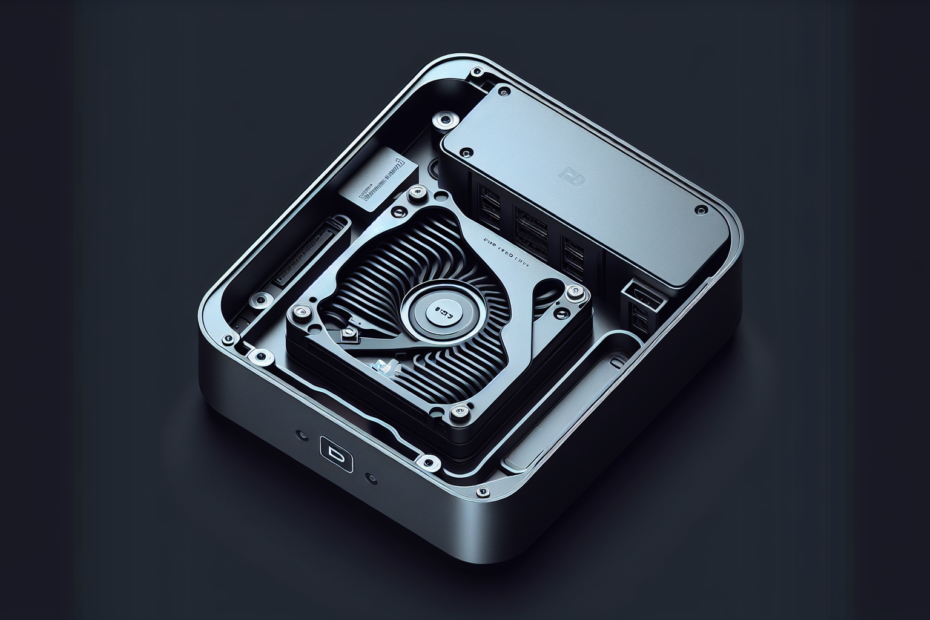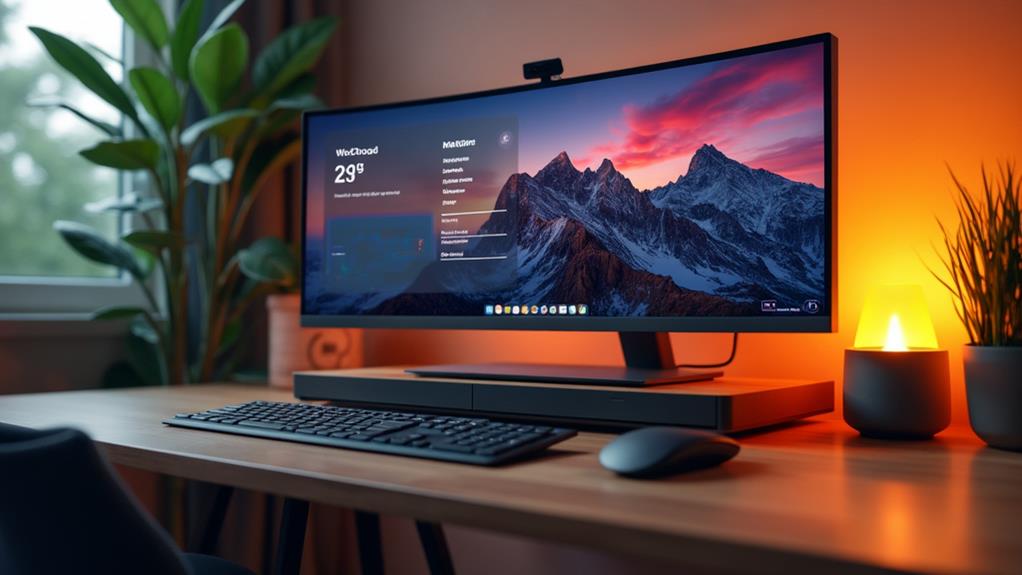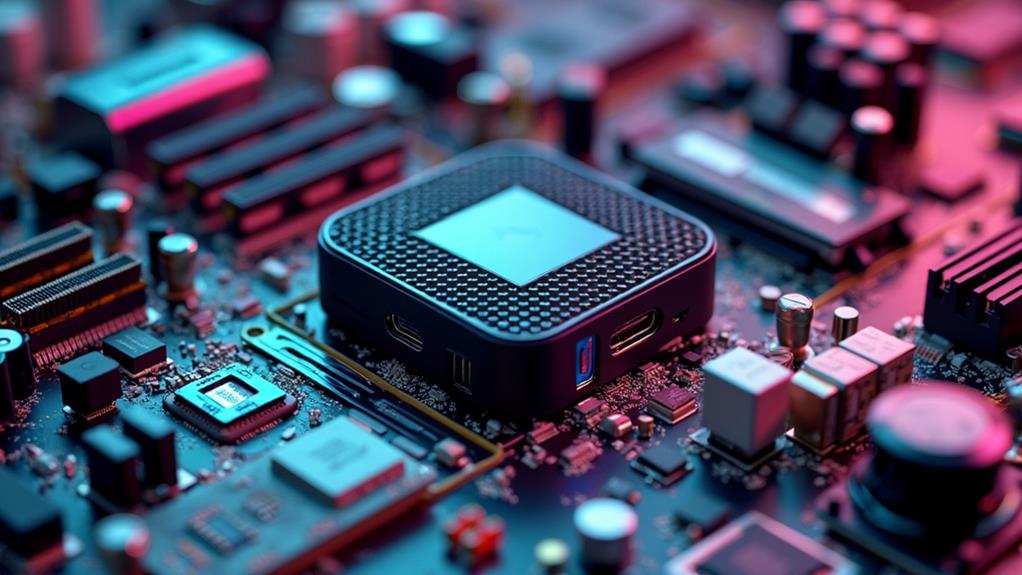



Imagine having a mini PC that can store all your files, documents, and media without any worries of running out of space. Well, in this article, we will explore the fascinating world of mini PCs and uncover the answer to the burning question: How many internal storage drives can you fit in a mini PC? Whether you’re a tech enthusiast or someone looking to upgrade their storage capabilities, get ready to be amazed by what these compact wonders can offer. So fasten your seatbelts and prepare to embark on a journey into the realm of mini PCs!
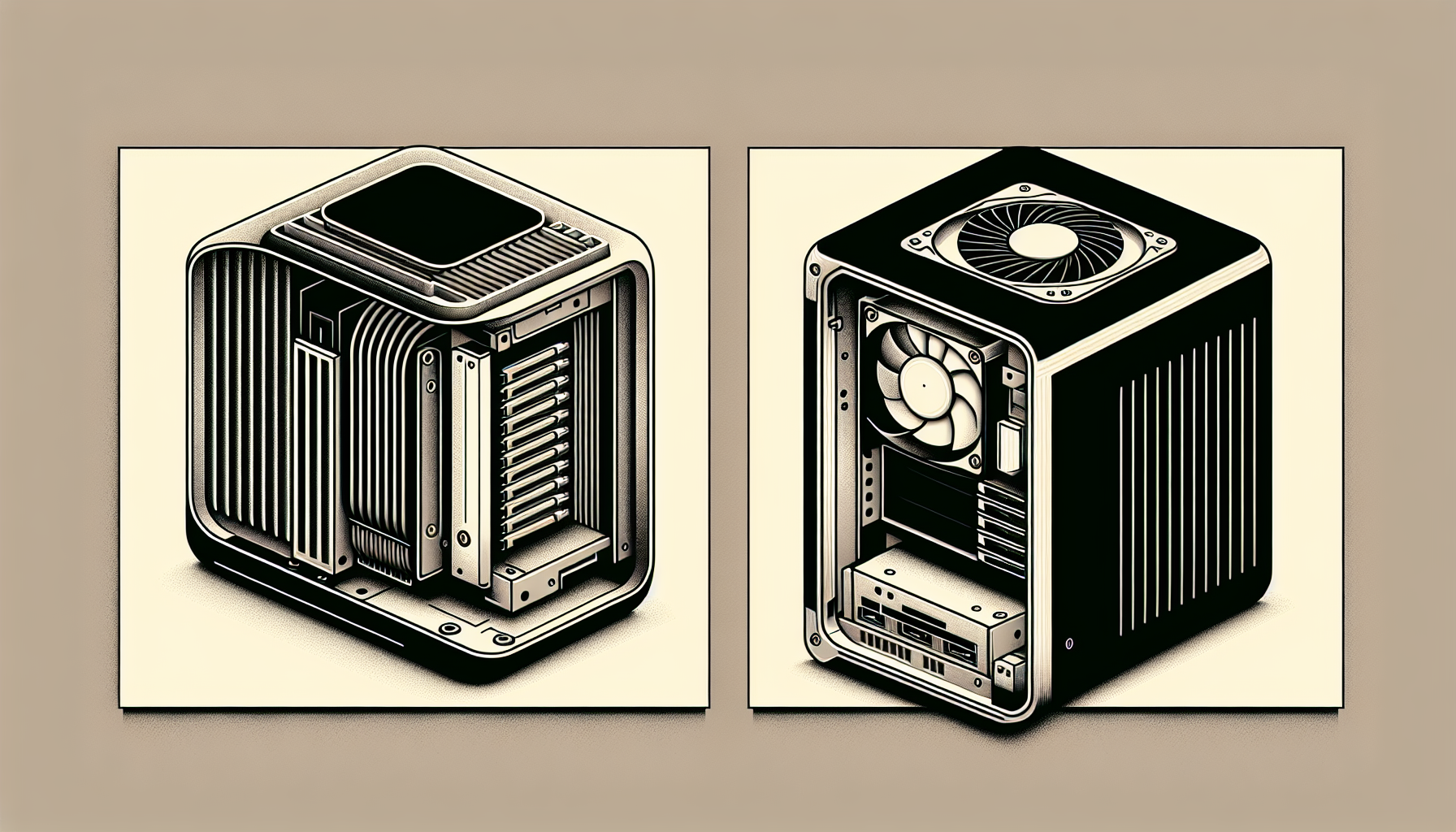
Introduction
When it comes to personal computing, one size doesn’t fit all. While traditional desktop towers have dominated the market for years, mini PCs have gained popularity for their compact size and versatility. Mini PCs offer a convenient and space-saving solution, especially for those with limited desk space or a preference for a clutter-free environment.
One important consideration when choosing a mini PC is the number of internal storage drives it can accommodate. After all, the amount of storage you have directly impacts the files, programs, and media you can store on your computer. In this comprehensive guide, we will explore the different types of mini PCs, factors to consider when choosing one with the right storage capacity, expanding storage options, and popular mini PCs and their storage capacities. Let’s dive right in!
Types of Mini PCs
Desktop Mini PCs
Desktop Mini PCs are compact versions of traditional desktop towers. They typically feature a small form factor and can fit comfortably on a desk, shelf, or even be mounted behind a monitor. These mini PCs often offer more expandability options compared to other types, making them an excellent choice for users who need additional storage options or want to upgrade their system in the future.
Mini-ITX PCs
Mini-ITX PCs are the smallest form factor of all mini PCs. They are highly compact, yet can offer the same level of performance as larger desktop towers. Despite their small size, many Mini-ITX PCs offer multiple storage drive bays, making them suitable for users who require extra storage capacity in their system.
NUC (Next Unit of Computing) PCs
NUC PCs, developed by Intel, are tiny, highly integrated systems that pack a punch. These palm-sized computers are known for their power efficiency and impressive performance. While most NUC PCs may have limited internal storage options due to their compact size, their small footprint makes them ideal for those who value portability and don’t require multiple storage drives.
All-in-One Mini PCs
All-in-One Mini PCs combine the monitor and the computer into a single device, making them a great space-saving option. These mini PCs often have limited internal storage options due to their compact design, as the focus is on integration and sleek aesthetics. However, all-in-one mini PCs are still capable of handling everyday computing tasks with ease.
Factors to Consider
Size and Form Factor
When choosing a mini PC, size and form factor are crucial considerations. The size and design of the mini PC will determine the number of storage drives it can accommodate. Larger mini PCs, such as desktop mini PCs and some Mini-ITX PCs, tend to offer more storage drive bays, while smaller NUC PCs and all-in-one mini PCs may have limitations due to their compact size.
Available Drive Bays
The number of available drive bays in a mini PC directly impacts its storage capacity. A drive bay is a slot or compartment specifically designed to hold storage drives. Desktop mini PCs and some Mini-ITX PCs generally have more available drive bays, allowing for a higher number of internal storage drives. On the other hand, NUC PCs and all-in-one mini PCs may have limited drive bays, restricting the number of internal storage drives that can be installed.
Storage Interface
The storage interface refers to the connection between the storage drives and the mini PC. The most common storage interfaces for mini PCs are SATA (Serial ATA) and M.2. SATA interfaces are widely supported and allow for easy installation of traditional hard disk drives (HDDs) and solid-state drives (SSDs). M.2 interfaces, on the other hand, are smaller and faster, primarily used for SSDs. When considering the storage interface, make sure your mini PC supports the type of drives you intend to install.
Power Supply
The power supply unit (PSU) of a mini PC plays a crucial role in powering the components, including the storage drives. It’s essential to ensure that the PSU can handle the power requirements of the storage drives you plan to install. Insufficient power supply can lead to instability and potential damage to the system. Consider the power requirements of your storage drives and choose a mini PC with an adequate PSU.
Cooling System
Proper cooling is vital to prevent overheating and maintain optimal performance in a mini PC. The number and type of storage drives installed can generate additional heat, which needs to be efficiently dissipated. Consider the cooling capabilities and airflow design of the mini PC to ensure that it can effectively handle the heat generated by the storage drives.
Maximum Number of Drives
Desktop Mini PCs – 1 to 2 Drives
Desktop mini PCs generally offer more drive bays compared to other types of mini PCs, allowing for a higher number of internal storage drives. Depending on the specific model and manufacturer, desktop mini PCs typically support one to two internal storage drives. This means you can have one or two hard disk drives (HDDs) or solid-state drives (SSDs) installed in your mini PC for ample storage capacity.
Mini-ITX PCs – 2 to 4 Drives
Mini-ITX PCs are known for their compact size but still manage to provide multiple storage drive bays. Depending on the individual model and manufacturer, Mini-ITX PCs can accommodate two to four internal storage drives. This makes them an excellent choice for users who require a significant amount of storage capacity in a compact form factor.
NUC PCs – 1 Drive
NUC PCs, due to their ultra-compact size, may have limitations when it comes to internal storage options. Most NUC PCs support only one internal storage drive. This single drive can be an HDD or an SSD, allowing you to store files, programs, and media on your mini PC.
All-in-One Mini PCs – 1 Drive
All-in-one mini PCs, with their integrated design, often have limited internal storage options. They typically support only one internal storage drive due to space constraints. However, considering their intended use as everyday computing machines, a single drive is usually sufficient for most users’ needs.
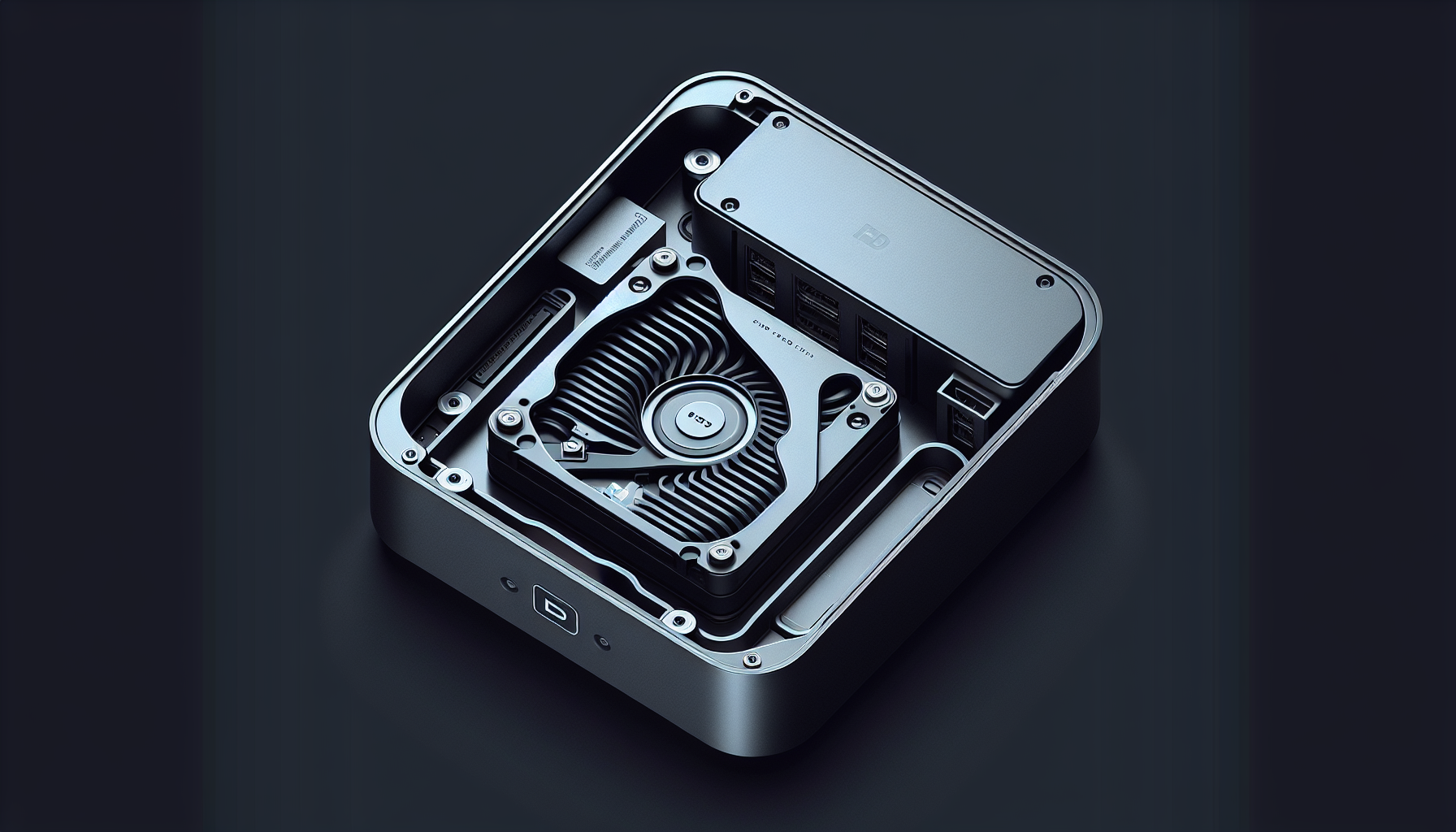
Expanding Storage Options
External Hard Drives
If the storage capacity of your mini PC is limited, external hard drives can serve as a valuable solution. External hard drives can be connected to your mini PC via USB or eSATA ports, providing additional storage space for your files, media, and backups. External hard drives offer the advantage of portability, allowing you to easily transfer data between different computers.
Network Attached Storage (NAS)
For users seeking a centralized storage solution or the ability to access their files from multiple devices on a network, a Network Attached Storage (NAS) device can be a great option. NAS devices connect to your mini PC through the network, providing shared storage accessible by multiple users or devices. NAS devices can house multiple hard drives and often offer advanced storage management features.
Cloud Storage
Cloud storage has gained popularity in recent years, offering users the ability to store and access their files remotely. With cloud storage services, your files are stored on remote servers, accessible from anywhere with an internet connection. Cloud storage offers the advantage of scalability and automatic backups, ensuring your files are securely stored and protected.
Benefits and Limitations
Advantages of Multiple Internal Storage Drives
Having multiple internal storage drives in your mini PC comes with various advantages. Firstly, it allows for more storage capacity, enabling you to store a large number of files, programs, and media. Secondly, multiple drives can increase the overall performance of your mini PC. By separating the operating system from the data storage, you can optimize the system’s speed and responsiveness. Lastly, multiple drives provide the option for redundancy and data protection. With RAID configurations, you can mirror or stripe data across multiple drives, ensuring data integrity and safeguarding against drive failures.
Drawbacks of Limited Internal Storage
On the other hand, mini PCs with limited internal storage face a few drawbacks. The most obvious limitation is the reduced storage capacity, potentially restricting the number of files and programs you can keep on your mini PC. Additionally, limited internal storage may require more frequent file management and cleanup to free up space. It’s also important to consider future storage needs, as mini PCs with limited internal storage may not easily accommodate expanding storage requirements.
Choosing the Right Mini PC
Determine Your Storage Needs
Before purchasing a mini PC, it is essential to evaluate your storage needs. Consider the types of files, programs, and media you will be utilizing and estimate the amount of storage space required. If you frequently work with large files or require substantial amounts of storage, opting for a mini PC with multiple internal drive bays might be the best choice. Conversely, if your storage needs are minimal or you prefer to utilize external storage solutions, a mini PC with limited internal storage may be suitable.
Consider Your Budget
Budget is always an important factor to consider when purchasing any computer system. Mini PCs with more extensive storage options and higher performance capabilities tend to be more expensive. Determine your budget and weigh it against your storage requirements to find the sweet spot that meets your needs without breaking the bank.
Evaluate Other Features
In addition to storage capacity, there are other features to consider when selecting a mini PC. Look into the processor, RAM, graphics capabilities, connectivity options, and any specific requirements or preferences you may have. Consider how you will be using the mini PC and ensure that it meets your needs beyond storage capacity.
Check Compatibility and Expandability
When selecting a mini PC, it is crucial to check the compatibility and expandability. Ensure that the mini PC supports the type of storage drives you plan to install, whether it be traditional HDDs or the faster SSDs. Additionally, check if the mini PC supports RAID configurations if you require data redundancy or increased performance. Look into the possibility of adding more drives or upgrading the storage capacity in the future, especially if you anticipate your storage needs to grow over time.
Popular Mini PCs and Their Storage Capacities
Intel NUC 10 Performance Kit – Up to 2 Drives
The Intel NUC 10 Performance Kit is a powerful mini PC that can accommodate up to two internal storage drives. This mini PC supports both SATA and M.2 drives, allowing for flexible storage options. With the capability to house two drives, you can utilize a combination of HDDs and SSDs to maximize both storage capacity and performance.
ASRock DeskMini 310 – Up to 2 Drives
The ASRock DeskMini 310 is a highly versatile Mini-ITX PC that offers up to two internal storage drives. It supports both SATA and M.2 drives, providing a wide range of storage options. The DeskMini 310’s compact form factor and expandable storage capacity make it an excellent choice for users seeking a balance between size and storage capabilities.
Gigabyte BRIX GB-BSCE-3955 – Up to 1 Drive
The Gigabyte BRIX GB-BSCE-3955 is a compact NUC PC that supports one internal storage drive. While it may have a limitation in terms of internal storage options, the BRIX GB-BSCE-3955 offers impressive performance and power efficiency. The single drive bay can still provide ample storage for everyday computing tasks.
Installation and Configuration Tips
Prepare the Drives and Cables
Before installation, make sure to prepare the storage drives and cables. Ensure that the drives are compatible with the mini PC’s storage interface. Organize and label the cables to make the installation process smoother and avoid any confusion.
Identify the Drive Bays
Familiarize yourself with the mini PC’s internal layout and identify the drive bays. Depending on the mini PC model, the drive bays may be located in different positions or have specific mounting mechanisms. Understanding the drive bay placements will help you properly install the storage drives.
Connect the Drives
Carefully connect the storage drives to the mini PC’s storage interfaces. Ensure the connections are secure and fit into the corresponding ports. Follow the manufacturer’s instructions for proper installation and avoid applying excessive force while connecting the drives.
Adjust BIOS Settings
After the installation, access the mini PC’s BIOS settings to configure the storage drives. Make sure the BIOS recognizes the newly installed drives. Adjust any necessary settings, such as the boot order or RAID configurations, to ensure proper functionality and optimal performance.
Conclusion
In conclusion, the storage capacity of a mini PC is an essential consideration when choosing the right device for your needs. The number of internal storage drives a mini PC can accommodate varies depending on its size, form factor, and design. Understanding the different types of mini PCs, factors to consider, and expanding storage options empowers you to make an informed decision.
Remember to determine your storage needs, consider your budget, evaluate other features, and check compatibility and expandability when selecting a mini PC. By considering these factors, you can find a mini PC that offers the storage capacity and performance you require. Whether it’s for work, entertainment, or both, a mini PC with sufficient storage capacity ensures that you have ample space to store your files, programs, and media without compromise.
Disclosure: As an Amazon Associate, I earn from qualifying purchases.
